After a few years in which he played brilliantly, Julian Brandt went through the expected change of environment with his move from Bayer Leverkusen to Borussia Dortmund. He was the main player of the Peter Bosz’s squad in the past season, becoming one of the most exciting players to watch there is, and keeping up with the potential that was clearly in him from the first day.
Now, he will go to the Bundesliga’s runner-ups and will be one of the keys for them to twist Bayern Munich from the throne, especially after their activities in the market which resulted in a highly strengthened team.
Lucian Favre’s men will surely play a very concrete attacking football with Brandt as one of the crucial gear wheels for them to make a step forward in the national championship. This tactical analysis will show you what are the strongest points that the German is bringing to his new team, and what his role could be.
Brandt’s development – becoming a midfielder
As from the half of the last season, Peter Bosz was appointed as the Bayer Leverkusen’s boss and he has changed the 23-year-old’s game for 180 degrees. After the Dutchman came to BayArena and did the analysis of the squad, Brandt’s role in the team became much more important and all kinds of different since he went from the wing, which was his natural position at the time, to play in the midfield as the main creative force for them.
The new coach reformed the player’s approach and made him the man that is in control of an almost every happening on the pitch. Even though his position now is the central midfielder, the German is a very attacking-oriented type of one and spends most of his time in the high parts of the inner-corridors.

As it is shown in his heatmap, the manoeuvre space for Brandt is most taking place in the half-spaces on the opponents’ half but with a clear tendency to pull himself out to the flanks. He also often comes lower on the pitch to participate in the build-up, mostly positioning on the left-hand side while doing it.
In this role, he has 90.7% per cent of the pass accuracy with 1.78 shots per game and makes 59.2% of his total recoveries in the opposition’s part of the field which makes him important in both attacking actions and defensive set up for his team. At Signal Iduna Park he will probably play with the same tasks and will bring the directness to Borussia’s squad.
Sense for space and coping with pressure
The biggest strengths in the midfielder’s play are tightly connected with his secureness on the ball and space awareness. His versatility allowed him to adapt to a new position with a huge success and to be a different kind of danger for the opponents out of the central zones of the pitch.
With his good positioning and attacking-progressive mindset, Brandt turned out to be a great pass-forward option in the latest season and could be the main attack-accelerator in Dortmund. He tends to always find the gaps in the rival’s defensive block which he exploits to ask for the ball and to get it between the lines.
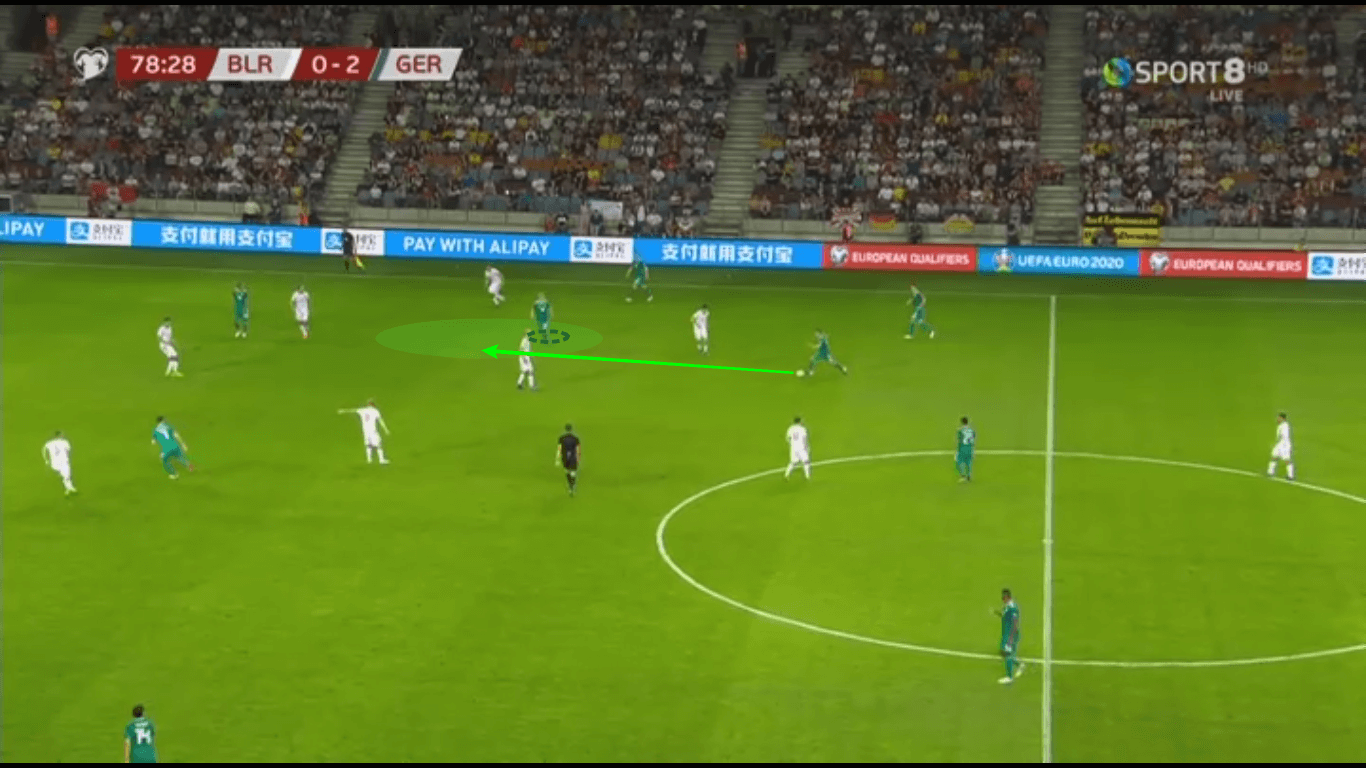
In the picture, we can see the example of one of the most common positioning for this midfielder, since he searches for the room in the inner-corridor behind the guards’ backs. The German doesn’t need much space to feel comfortable to be a passing option, and that is what Favre will get in order for his team to become a faster threat for the opponents.
The new Dortmund’s player copes with pressure very good and often gets the ball in the tight spaces. He is quite mobile on the pitch and tries to get the ball in the various of the zones on it. At times he lowers himself, and at times he goes deeper, but he doesn’t have problems with the opposition’s press wherever he is on the field.
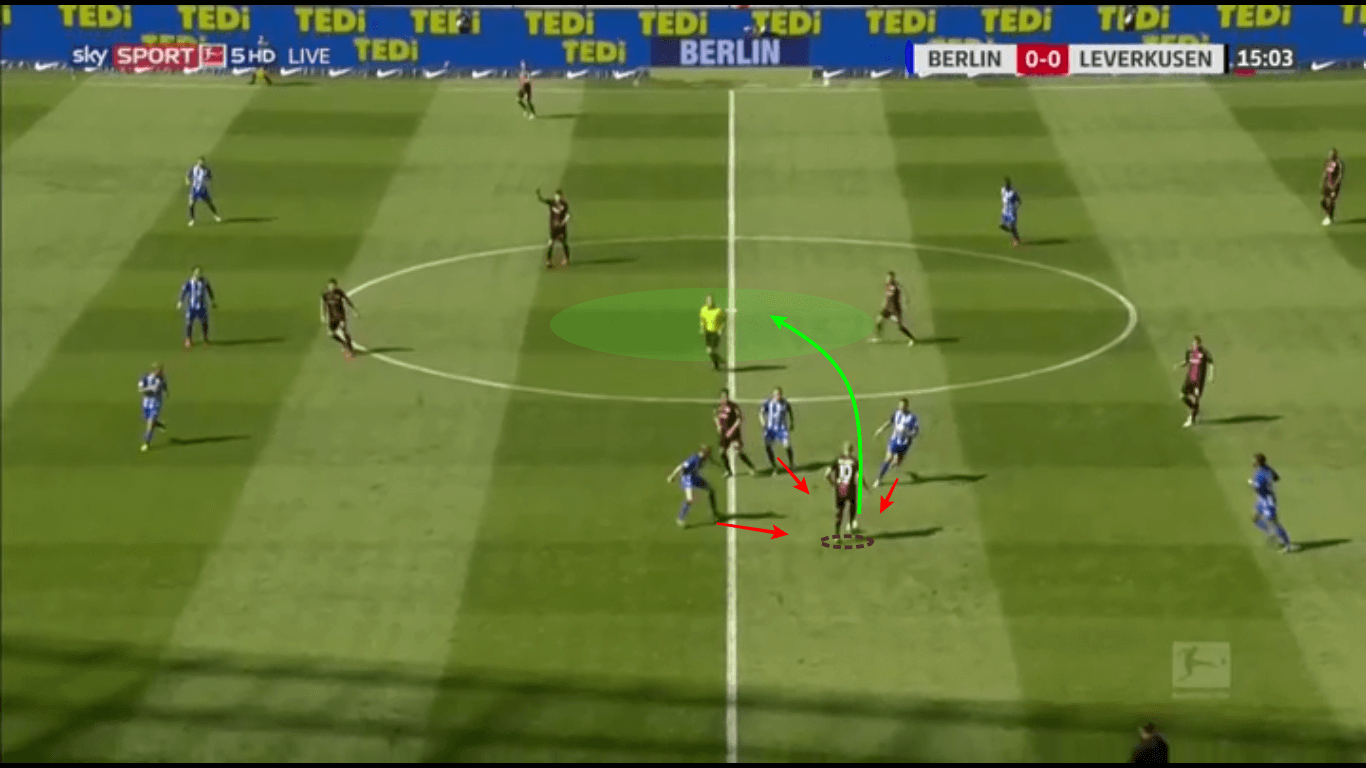
Brandt often positions near the half-way line, as in this situation, in order to provide another passing option for his team-mates and so they could create a surplus situation over their opponents. He deals with pressing pretty good, finding a difficult solution with a pass that goes above the defending players, which changes the focus of the action and enables his team to go forward quickly and without close guards.
Those characteristics of the German national team member will probably be used for him to organise attacks and to once in a while be an unexpected lower midfielder in the build-up.
His coping with the opposition is also good when it comes to 1v1 situations. He often tries to initiate those setups, getting better of the direct rival in most cases and making his team break through the opposing defensive structure.
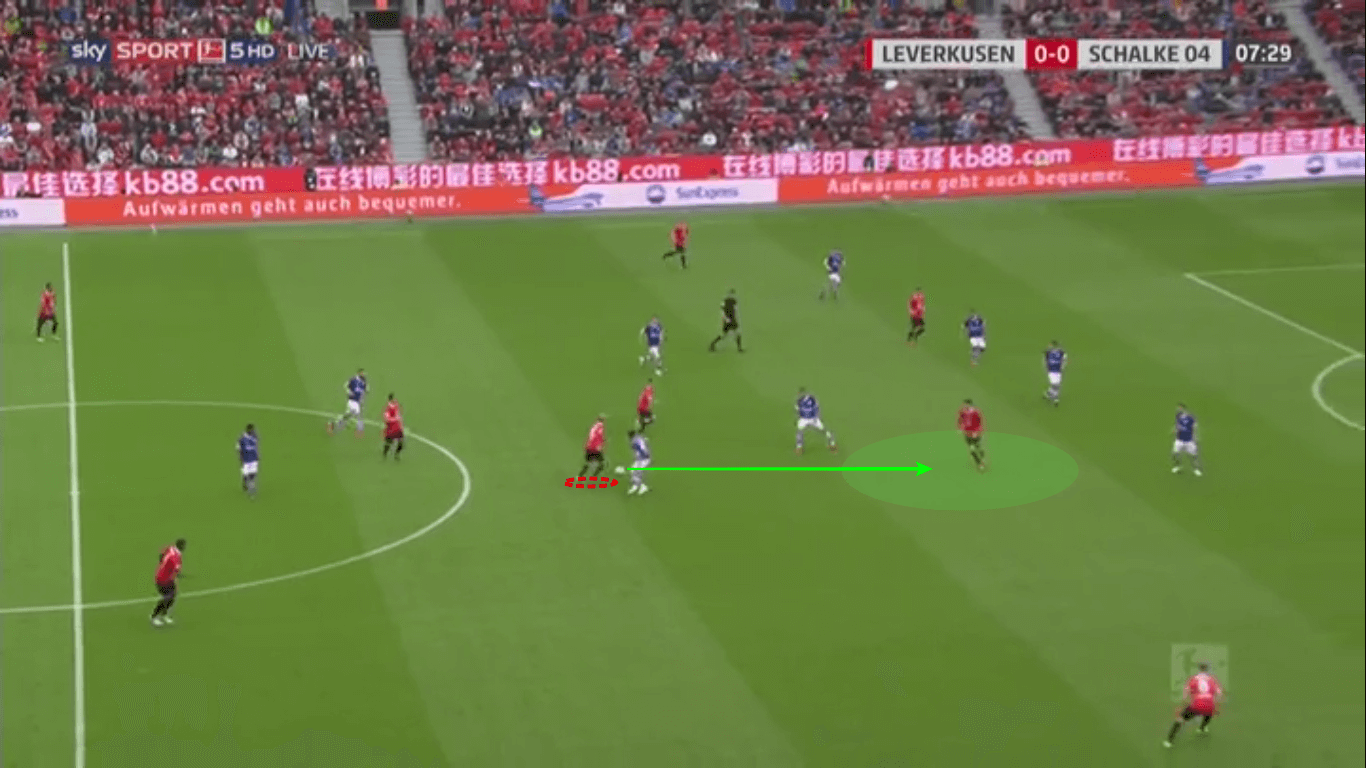
In the image above it is shown how the German solves those situations – firstly he wins the 1v1 battle against the opponent in the sensitive zone of the pitch and after that, he gives a good pass to his player which breaks the line for them and gets them fast into the final third.
He also gives a huge impact when he finds himself in the numerical deficit against the opposers. The young midfielder most of the times finds the way to get out of the tough situations and to pass to the free player that can make the attack progress.
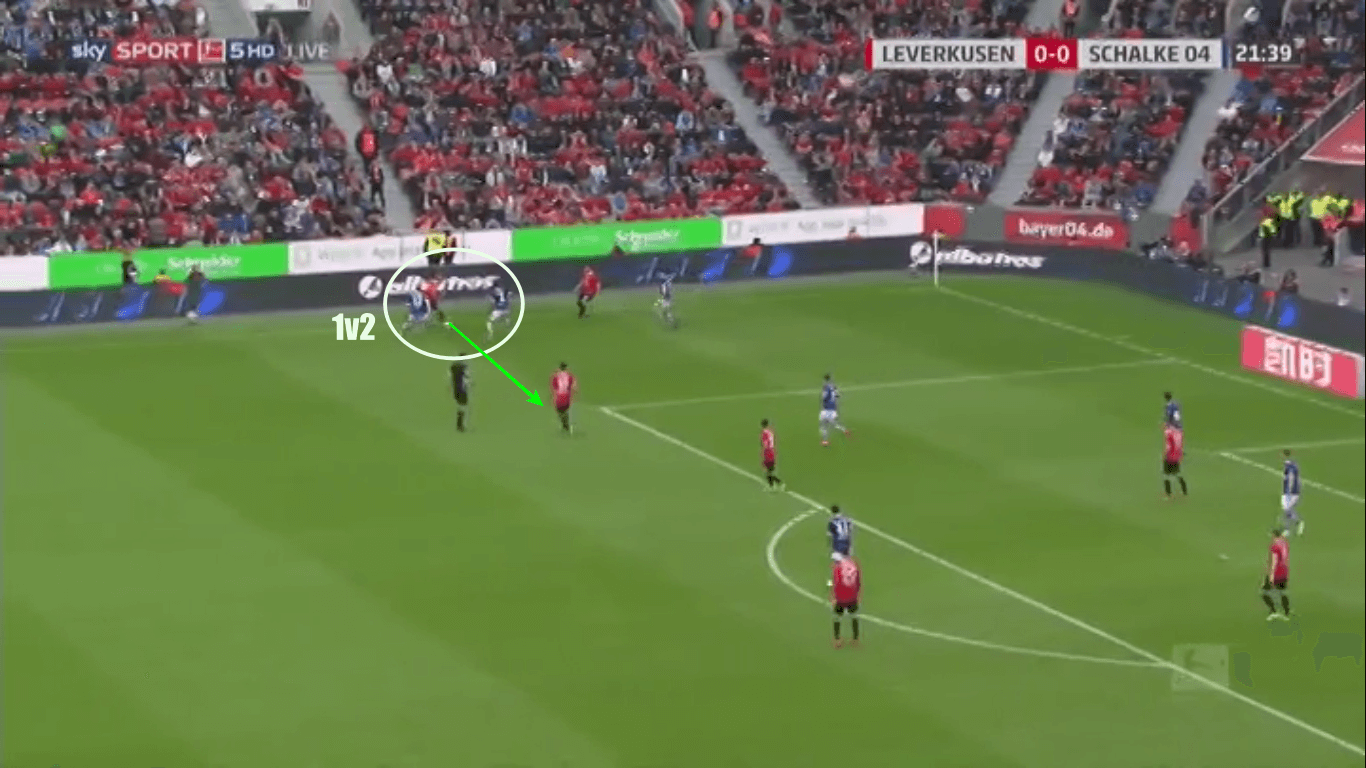
As it is shown, Brandt copes successfully with the difficult 1v2 position he is in on the flank and manages to find the team-mate who is available for the pass at the edge of the box. Those qualities that he has could be very lucrative for his new team since he could thrive under pressure and can oftentimes come as a winner from the challenging scenarios.
Borussia will get a player that is good against the pressing and that can speed up their game. That could make them more unpredictable and faster in transformation, or could provide them with open players on different parts of the pitch since it is clear that Brandt gets a lot of the opponents’ attention wherever he positions himself.
His role in Dortmund
Lucian Favre set up his tactics and his system throughout the last season, and they were pretty close to winning the domestic title but were a few good performances short to do it. In order to change that fact, they appointed a mix of good experienced players and up-and-coming boys that could bring them a breath of fresh air and help them become a better team.
One of the up-and-coming guys is Julian Brandt who will secure them to play it faster and more dangerous through the midfield, with occasional rush outs to the flanks. His versatility will make it possible for them to play it more with the run-ins and to rotate more in the final parts of the pitch.
He will probably play as a high-positioned “eight” who will tend to find gaps in the half-spaces, but with a tendency to attack out of the second line.
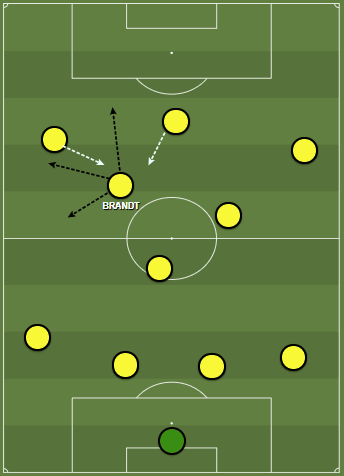
It is expected for him to have a huge attacking impact and to rotate with his team-mates that are in charge of threatening the opposition. In the image, it is shown how Borussia Dortmund would probably set up with Brandt in the team and what will be his tasks, especially when it comes to the attacking part of the game.
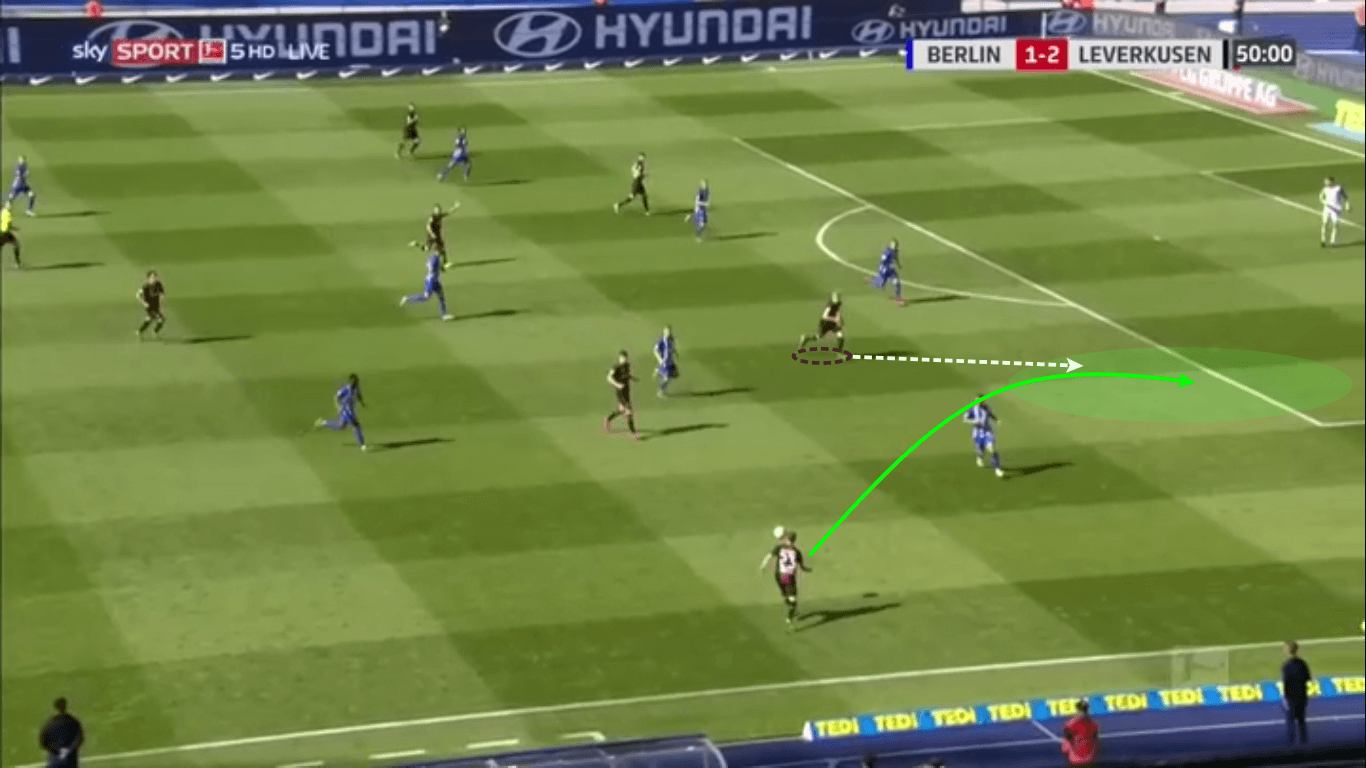
As we can see in the picture above, the German is familiar with playing in that role. He is positioned well between the opponent’s lines but pulls himself wider in order to exploit the free space. This will surely be asked of him to do since Borussia doesn’t have quite as many players who feel the space with the same quality as he does.
That will enable them to change spots in the final third, Brandt’s runs to the flanks and deep-runs will be followed with wide players or strikers getting lower. With those movements, they will increase the unpredictability of their decisions and options for passing and will surely become a more dangerous side.
The other thing he could provide at Signal Iduna Park is his involvement in creating the opportunities. He has an excellent vision and knows how to find his team-mates through the very tight rifts in the defence.
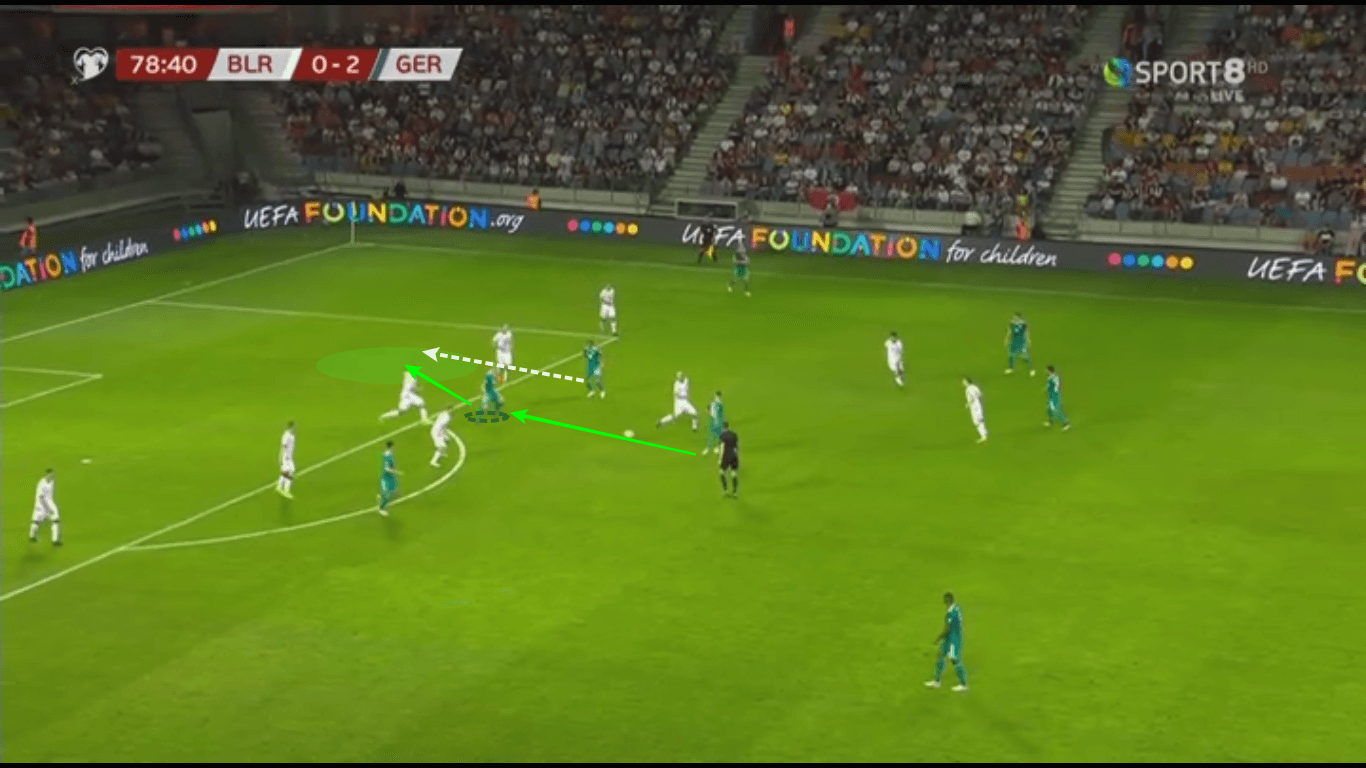
In both German and Bayer’s jersey he brought a lot of assists to his squad from the situations like the one that is shown overhead. He finds the gap both between the lines and between the players in the defensive line which he uses to get the ball and to set his team-mate a goal-scoring chance.
Since Borussia has a lot of players that can be dangerous, with the addition of this summer’s market, they could get very good use from Brandt’s creativity. He could also become one of the biggest threats from the second line of the attack with his sense for space and for the run-ins.
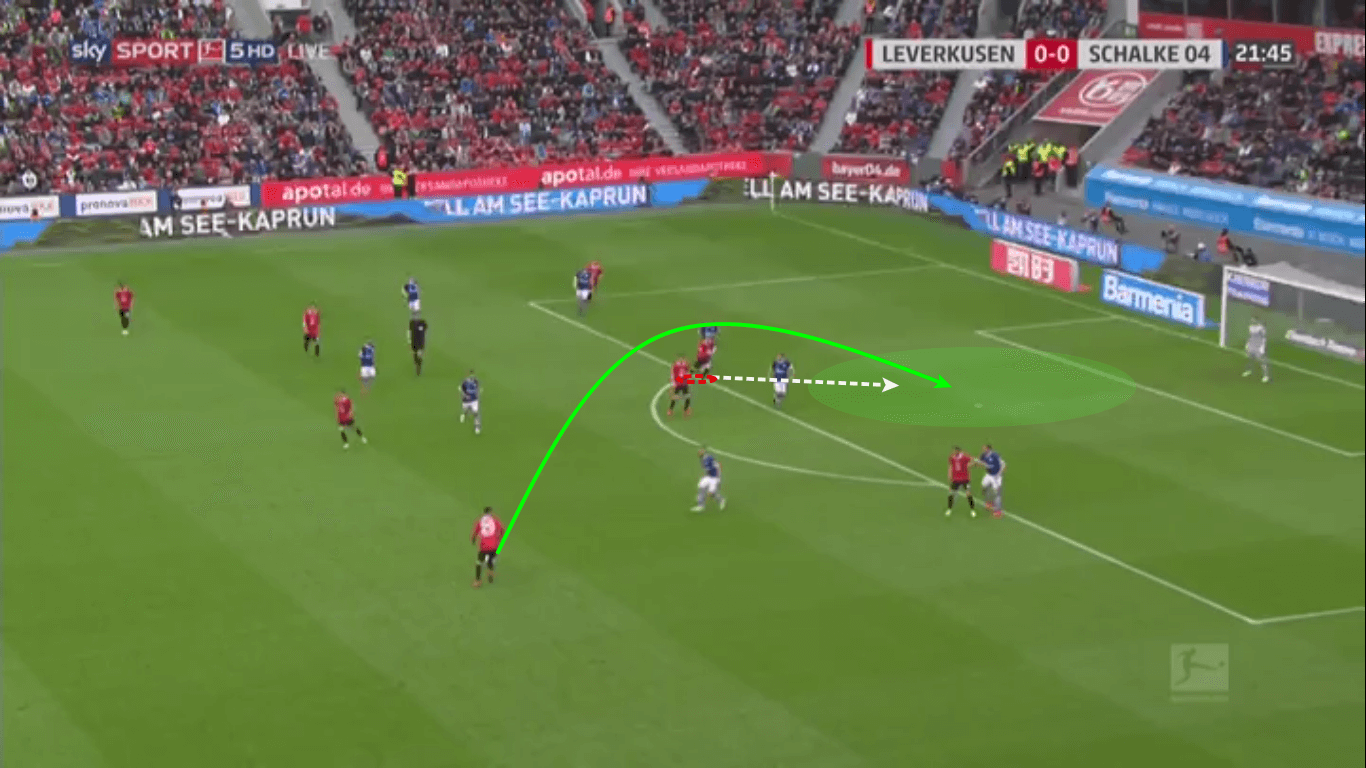
In the picture, we can see how the German uses the space in the box to run in it which lead his team to a great opportunity. The midfielder is known for his good communication with the other attackers and that is for sure one of the things the management at the Signal Iduna Park counts on.
The run-in game could make them harder to defend since the danger would come from more attacking players, and Brandt’s involvement could be of huge importance for Dortmund.
Conclusion
Julian Brandt’s transfer is what the Lucian Favre’s team needed if they wanted to step forward and challenge Bayern even harder in the next season. His abilities could be crucial for them to play faster then they used to play, and also it would make it possible for them to become more unpredictable and more direct.
The young German midfielder could fit in the squad perfectly as they have enough defensive midfielders to bring him support which could result with giving him a lot more of freedom in decisions in the decisive parts of the pitch.
Above everything, his all-roundness stands out as his main power and he will certainly be one of the most important players in Borussia Dortmund if he keeps developing the way he did throughout the last few years.
If you love tactical analysis, then you’ll love the digital magazines from totalfootballanalysis.com – a guaranteed 100+ pages of pure tactical analysis covering topics from the Premier League, Serie A, La Liga, Bundesliga and many, many more. Buy your copy of the June issue for just ₤4.99 here, or even better sign up for a ₤50 annual membership (12 monthly issues plus the annual review) right here.

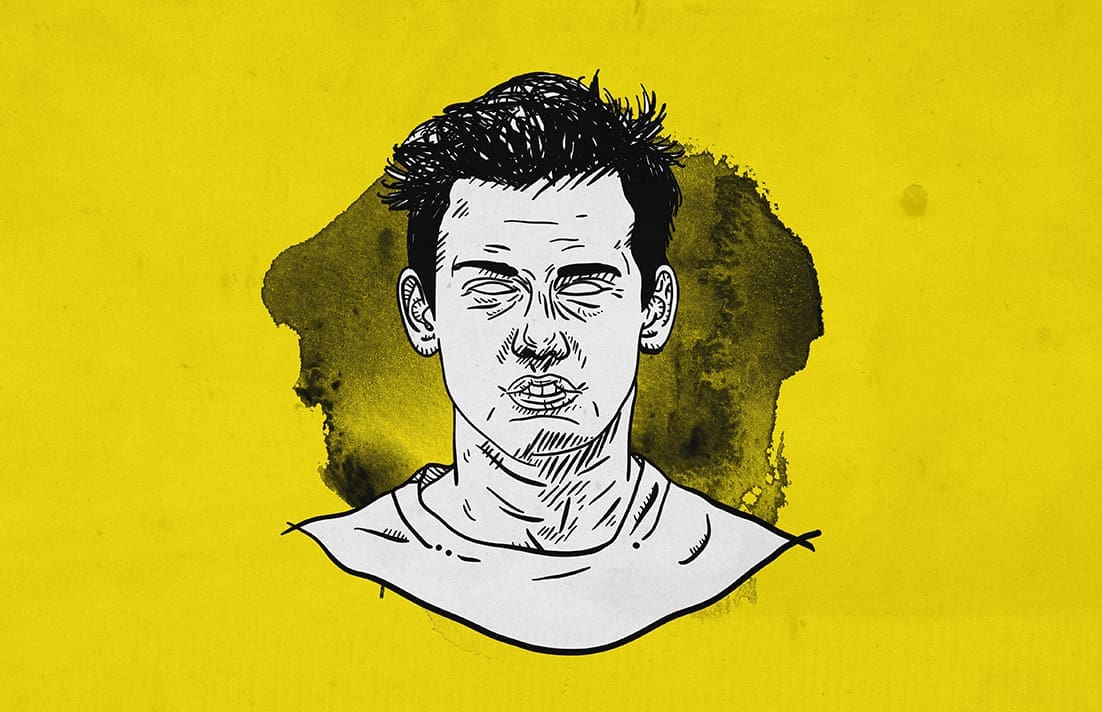



Comments